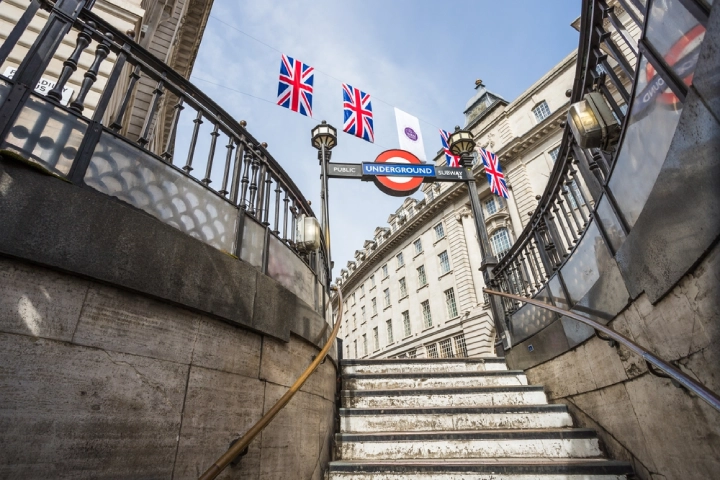
Summer is knocking at the UK’s doors and, in particular, London is known to be significantly affected by rising temperatures. With record numbers touching 40C in 2022, 2023 is prospecting to be just as warm.
Indeed, the Met Office has predicted that 2023 will be a lot hotter than 2022. As one of the warmest years on record, the temperatures are predicted to rise by between 1.08C to 1.32C compared to 2022. The months of June and July will see heat alerts, as estimates predict that there is a 45% chance for Britain to experience a hotter-than-usual summer.

But how will London cope with another hot and dry summer, especially on public transport?
Will there be a heatwave?
Even though there is no confirmation on whether there will be a heatwave or not, forecasts suggest that the El Niño climate phenomenon might make a comeback, meaning that the country and the capital would exceed 1.5C of warming.
EU’s Copernicus Climate Change Service Carlo Buontempo explained: “El Niño is normally associated with record-breaking temperatures at the global level. Whether this will happen in 2023 or 2024 is not yet known, but it is, I think, more likely than not.”
On 10 June, the average London temperature stood around 29C, which has been the peak of 2023 so far. These rising numbers are a consequence of an Iberian plume, which is a mass of warm air coming north from Spain. This also means that thunderstorms will follow. As Met Office forecaster Simon Partridge told MailOnline: “It will get warmer but there may well be more cloud with heavy, thundery showers mixed in as well. There will still be plenty of sunshine around, but it will come with much muggier nights.”
In order to be classified as a heatwave, temperatures around the UK have different thresholds. For instance, London must reach a temperature higher than 28C, while in Scotland the minimum is 25C. It is still not confirmed whether the capital will see a heatwave, but if it does reach these temperatures, they are not predicted to last for more than three consecutive days.
How will the London Tube and Overground be affected?
In London, the Underground network can experience temperatures that feel hotter than the outside heat. Sometimes, temperatures in Tube trains can be 10°C hotter than the temperature perceived outside.
During heatwaves, tube lines with no air-conditioning will be almost unbearable. For example, Central line trains endured temperatures as high as 35.4°C.
Forecasters compare London heatwaves with Hanoi in Vietnam and Casablanca in Morocco, as humidity can hit high peaks too.
There are some lines to avoid during London’s hottest days of the year. Like in mid-June, temperatures are set to rise in the next weeks. The lines to avoid during heatwaves, in descending order, are:
- Bakerloo line
- Central line
- Northern
- Victoria
- Piccadilly
- Jubilee
- Waterloo
- District, Circle, Hammersmith & City, and Metropolitan
According to a 2016 report published by TfL, the temperatures registered on Bakerloo, Central, and Northern lines can hit up to 27°C. While the other lines range from 24.1°C on the Victoria line to 18.5°C on District, Circle, Hammersmith & City, and Metropolitan.
During 2019’s heatwave, TfL gave some advice on how to handle the warm temperatures. Mark Evers, director of customer experience for London Underground, said: “We advise customers to ensure they have water with them when they travel in order to stay hydrated, offer a seat to those who may need it, and, if they feel ill, to contact a member of staff at the next station or speak to the bus driver.”
On the other hand, the Overground service is not too affected by the heat. Apart from the lines that come out of Liverpool Street and the Emerson Park Branch, the overground trains are air-cooled. They do not have air-conditioning, but it is still a big difference compared with the outside temperatures.
How will bus services in London be affected?
London’s buses have been described as “pizza ovens crossed with saunas” by commuters.
During 2022’s heatwave, a bus in Brixton caught fire and the Met Office issued a Level 3 heath-health alert warning for London.
Apart from the risks of dehydration and heat exhaustion, firefighters have warned London citizens that there was an increased risk of fires due to the heatwave.
There is no update on an eventual service disruption; however, it is important to remember a couple of things:
- wear light clothing
- carry a fan
- avoid peak times
- try to avoid buses altogether
In 2018, bus drivers complained about working in scorching temperatures. Unite shop steward and London bus driver Moe told UNITElive that many of his colleagues suffered nose bleeds, drowsiness and fatigue.






